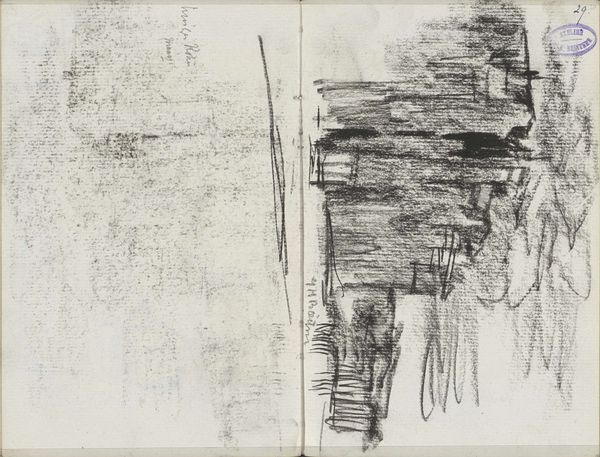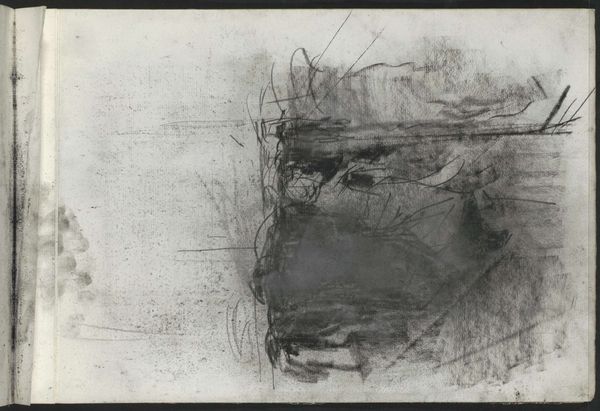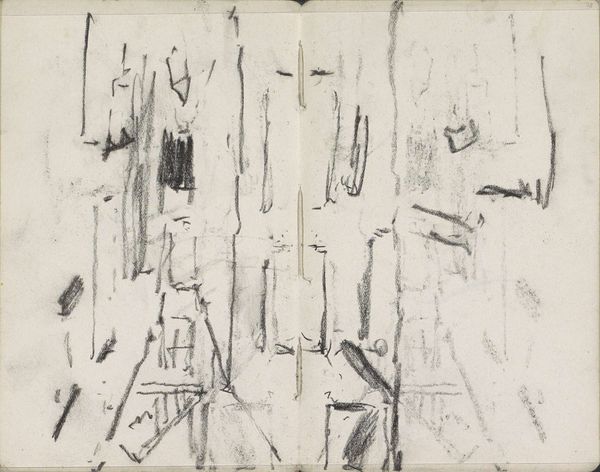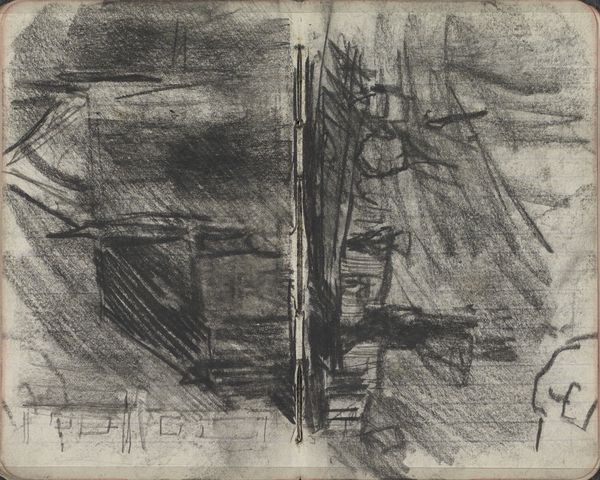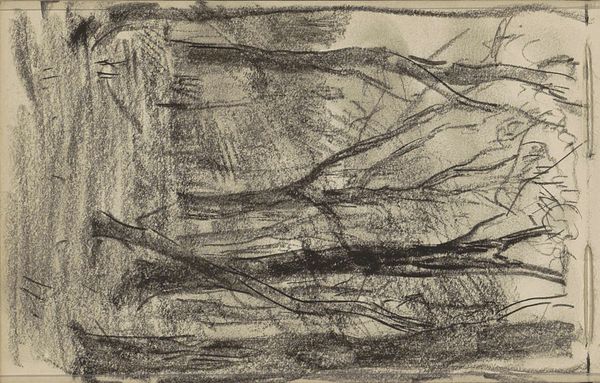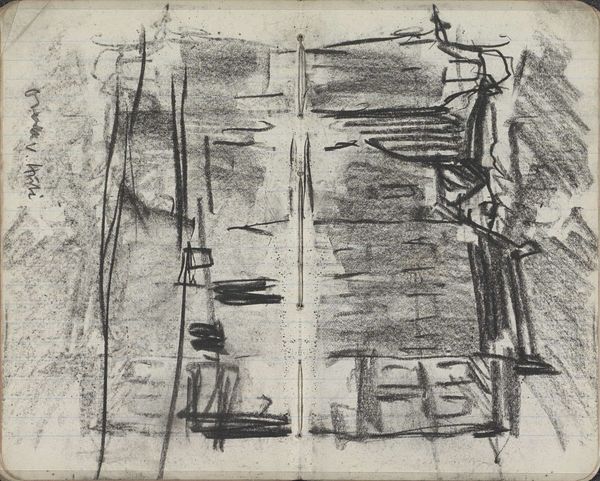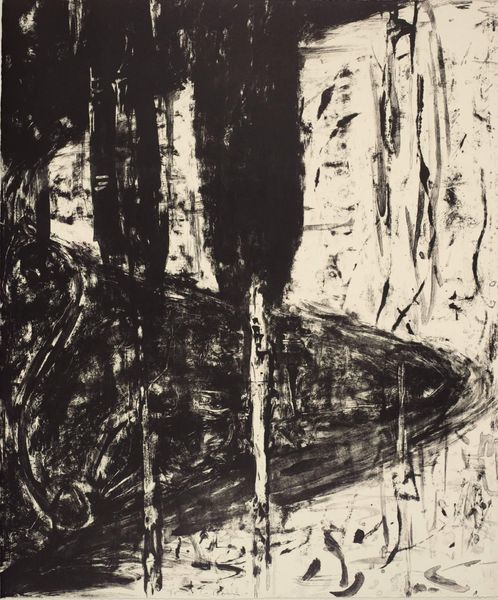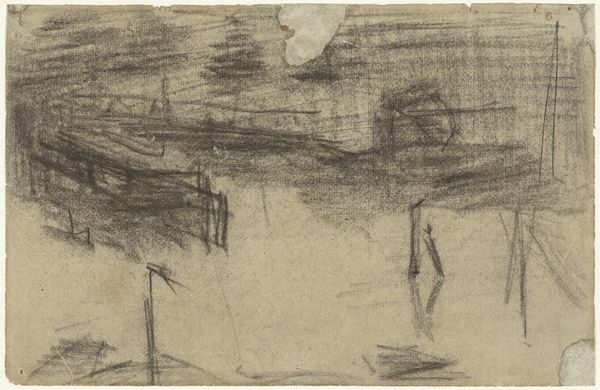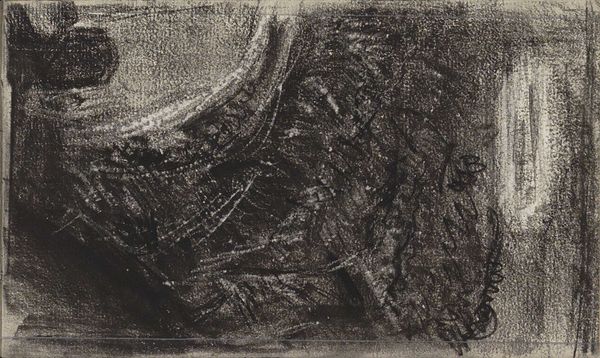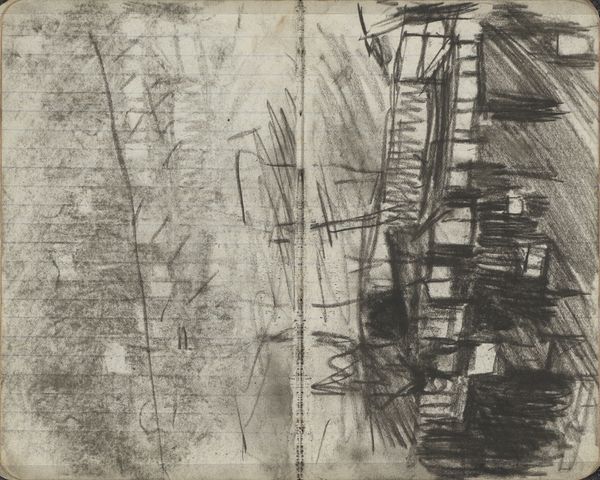
Zaterdagavondmarkt aan de Prinsegracht te Den Haag bij regen 1884 - 1886
0:00
0:00
georgehendrikbreitner
Rijksmuseum
drawing, charcoal
#
drawing
#
impressionism
#
landscape
#
charcoal drawing
#
pencil drawing
#
sketch
#
charcoal
Copyright: Rijks Museum: Open Domain
Curator: At first glance, I'm struck by the sheer energy of this sketch, the dark, smudged marks evoking a sense of fleeting, rain-soaked movement. Editor: Indeed. We're looking at George Hendrik Breitner's "Zaterdagavondmarkt aan de Prinsegracht te Den Haag bij regen," or Saturday Evening Market on the Prinsegracht in The Hague in the Rain, created between 1884 and 1886. The piece is composed of charcoal and pencil. It’s currently held at the Rijksmuseum. Curator: Breitner clearly wasn't interested in a pristine, polished scene. Look at how he uses the charcoal, almost aggressively, to capture the damp atmosphere, the hustle, the grittiness of a market street in the rain. One can imagine the labor in making the actual markets function for consumption. Editor: Breitner’s interest in depicting everyday urban life positions him within a broader socio-political context. The late 19th century saw rapid industrialization and urbanization, and artists like Breitner were keen to document the lives of ordinary people navigating these changing urban spaces. He exhibited the energy of everyday lives often omitted in artistic circles. Curator: Precisely. This isn't some idealized landscape; it's a slice of working-class life. You can almost smell the damp earth, hear the vendors hawking their wares, and the footsteps moving throughout the area. Editor: Consider the significance of the Prinsegracht itself. It was a bustling canal in The Hague, a center of trade and commerce, which made it an ideal location for such a market. Capturing the evening market suggests the late hours vendors were often keeping to support themselves. The historical relevance of location is so critical to this drawing. Curator: I also find it fascinating how Breitner, through his chosen materials—charcoal and pencil—creates a sense of immediacy. This feels like a fleeting impression, rapidly captured, rather than a carefully constructed composition, using accessible tools of production to express the nature of the street scene. Editor: And while the scene may look bleak, and, some may argue, uneventful, Breitner drew great value and meaning in depicting quotidian life in the Netherlands. He took it upon himself to capture the everyday events. He offered a lens into a new, expanding, and growing social reality. Curator: Studying how the materiality and the artist’s intentions behind capturing such scenes brings new insight into our relationship with the commercial sector of the area during this time. Editor: A quick sketch revealing so much—materiality, history, and enduring human realities. Thank you for illuminating our perceptions.
Comments
No comments
Be the first to comment and join the conversation on the ultimate creative platform.
